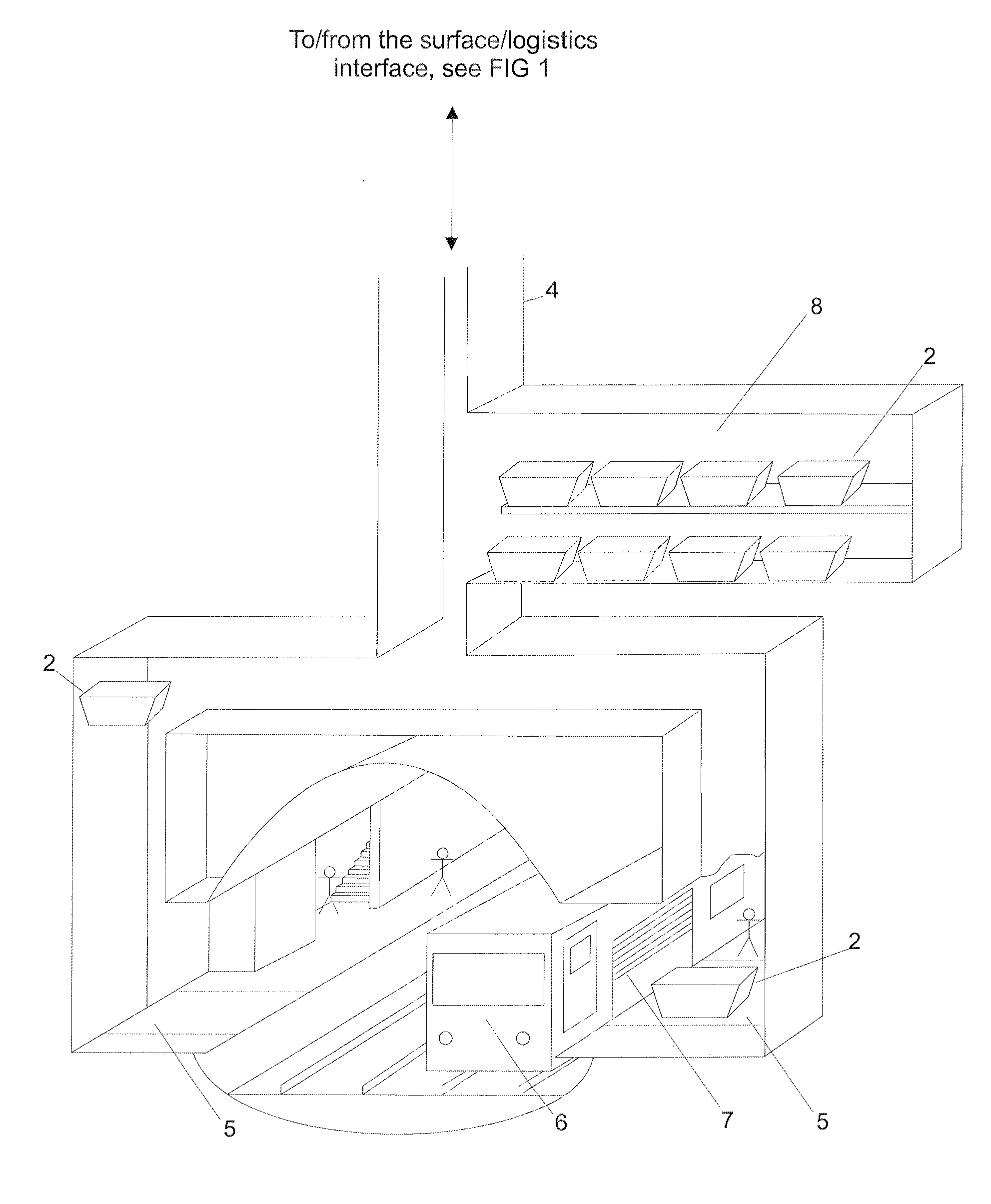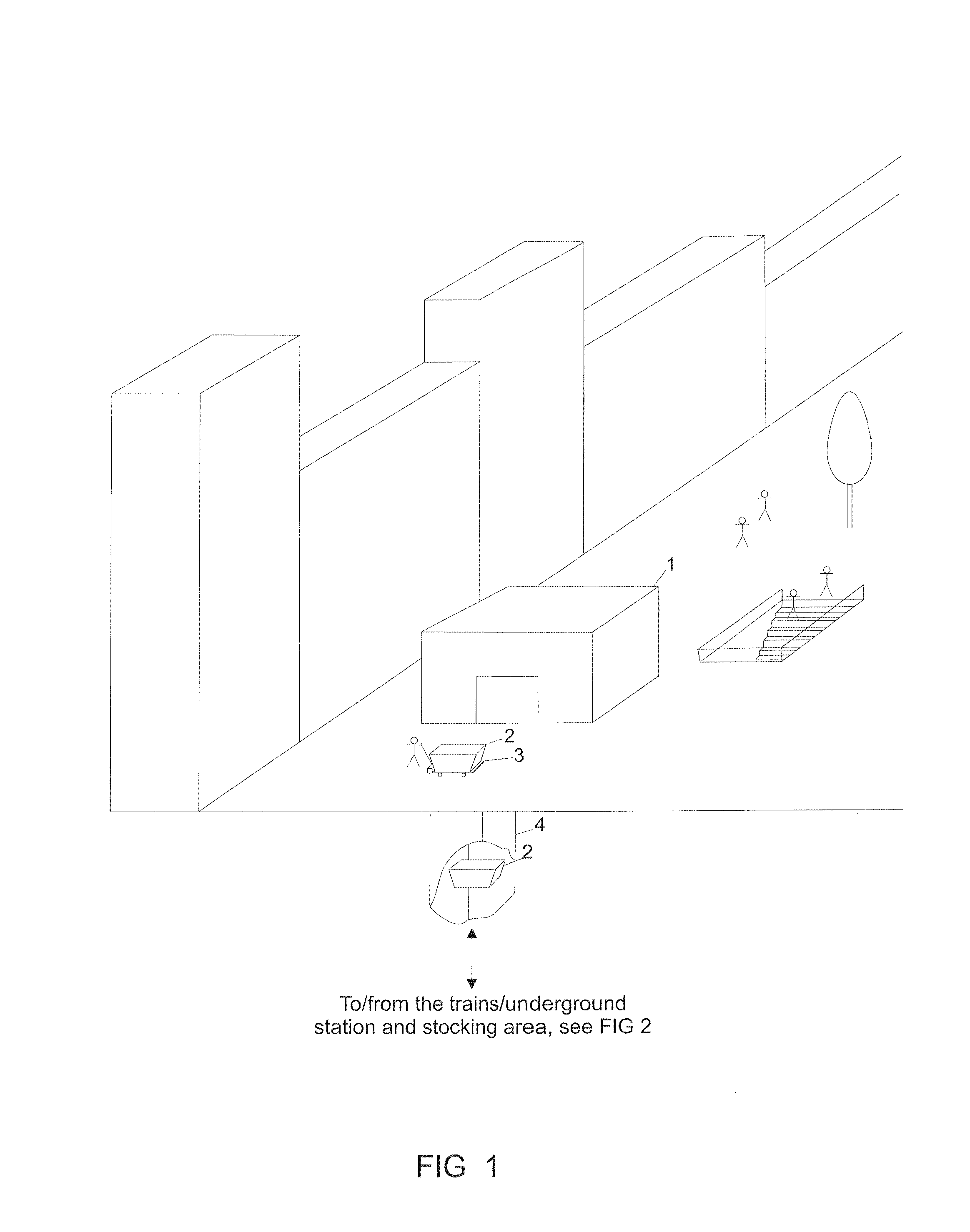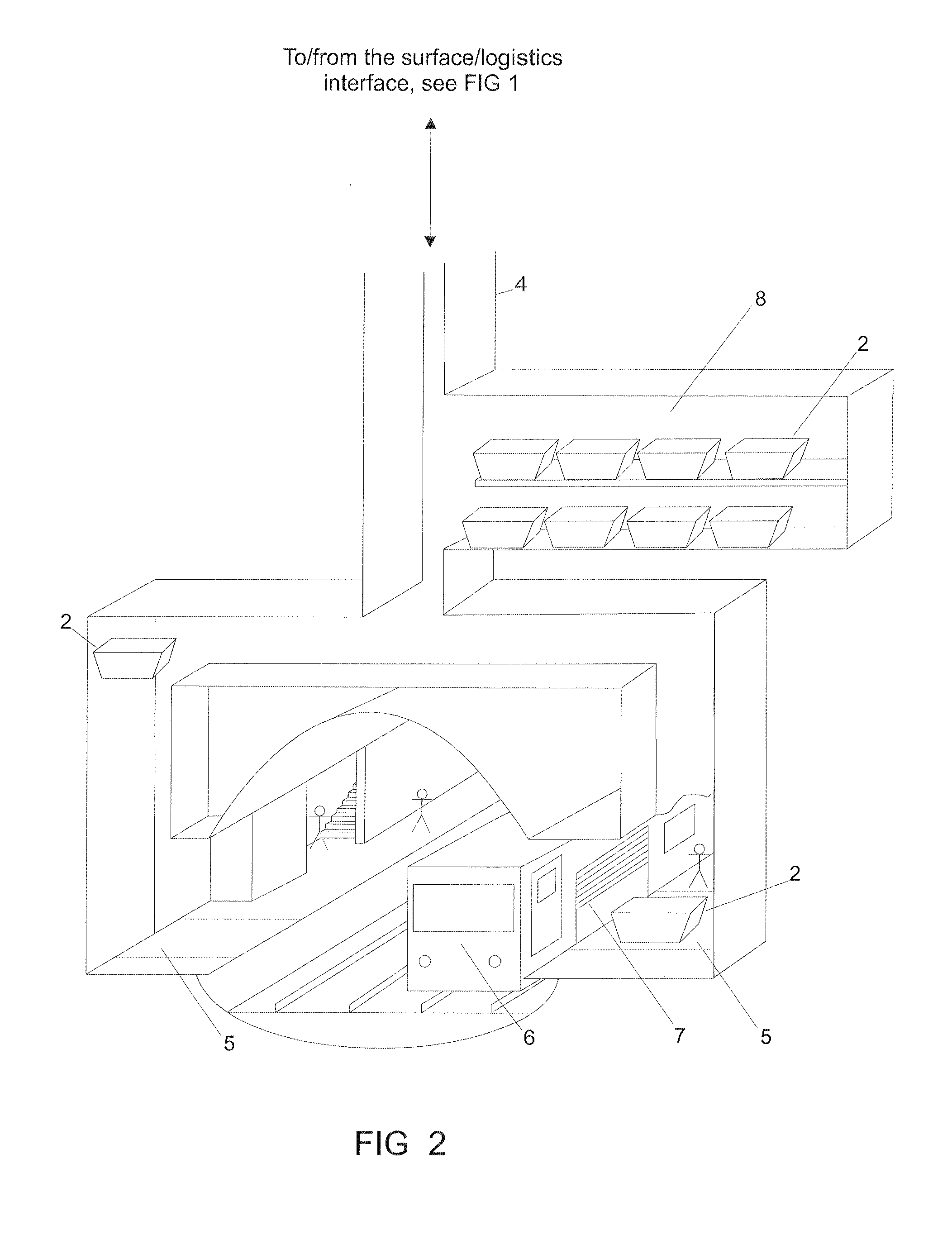Ecological Goods Logistics System
a logistics system and environmental technology, applied in logistics, railway tracks, instruments, etc., can solve the problems of increasing the cost of garbage collection, increasing the cost of materials and goods transportation, and inconvenient operation, so as to reduce pollution and waste of energy and resources, improve the quality of life, and reduce the effect of pollution and waste of resources
- Summary
- Abstract
- Description
- Claims
- Application Information
AI Technical Summary
Benefits of technology
Problems solved by technology
Method used
Image
Examples
Embodiment Construction
[0022]The system of the described embodiments intends to provide transport of goods in urban areas in a highly automated way with transport time and operating costs usually comparable or better than today's fuel propelled vehicle based transport. The system could be applied also to fuel propelled vehicles (e.g. buses), with limited, partial advantages.
[0023]Important advantages of the system compared to existing systems are:
[0024]massive reduction of air pollution
[0025]massive reduction of traffic congestion
[0026]reduction of noise
[0027]significant improvement of efficiency and considerable reduction of energy consumption with equivalent general performances
[0028]considerable increase of traceability and timeliness of the transport.
[0029]The system embodies a new process providing a new product based on mass passenger public transportation systems. The resulting system requires limited adjustments to infrastructure commonly used for the transport of passengers. It is based on the in...
PUM
 Login to View More
Login to View More Abstract
Description
Claims
Application Information
 Login to View More
Login to View More - R&D
- Intellectual Property
- Life Sciences
- Materials
- Tech Scout
- Unparalleled Data Quality
- Higher Quality Content
- 60% Fewer Hallucinations
Browse by: Latest US Patents, China's latest patents, Technical Efficacy Thesaurus, Application Domain, Technology Topic, Popular Technical Reports.
© 2025 PatSnap. All rights reserved.Legal|Privacy policy|Modern Slavery Act Transparency Statement|Sitemap|About US| Contact US: help@patsnap.com



